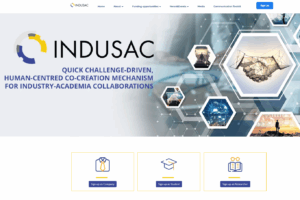
Structures of high-performance concrete based on design and construction material and technologies
December 31, 2019
Virtual reproduction of the architectural evolution of the medieval complex of Palau Reial Major, Barcelona
January 3, 2020To develop the connected car, improvements must be made in the field of electronics, such as advanced driver assistance systems (ADAS), new infotainment systems, and more recently communication systems and sensors that provide progressively higher levels of autonomy. These applications need to produce a beam of radiation that is sufficiently directional and adaptable that can scan the space to establish efficient communication or locate a target accurately. This is the case of the new multi-element antennas for data communications or radar detection, particularly for antennas working at millimetre wave frequencies. In this context, technology has been developed to adapt the use of these types of antennas of connected vehicles using a technique called Beamforming. This technique is increasingly used in wireless communication such as 5G, LTE and WLAN, in groups of 3D sensors, sonar medical imaging and audio systems. However, it has not been used for communications in the automotive industry to date.

Beamforming enables the antenna to form narrow beams that can simultaneously or sequentially scan the 3D space to select concentrations of radiation transmitted or received from an antenna in a specific direction and/or space. This selective concentration of radiation improves the signal-to-noise ratio and eliminates interference. The result is an improvement in the reliability of the system for complex and high velocity situations (for the various urban, suburban and rural zones), an improvement in the scope of V2X (V2V and V2I) systems, a significant increase in capacity by achieving GBps speeds, greater spectral and energy efficiencies and higher resolution and accuracy in general, which increases with frequency. In addition, the introduction of a reconfigurable multibeam communication system for sub-6GHz, particularly at MMW frequencies, should provide information (angle and or arrival time) on the source of the incoming signal (location of the infrastructure, another car, the satellite system, etc.) for safety applications or to reduce interference in a highly dense environment, and to connect with land-based and satellite systems.
Eventually, an advanced Beamforming technique could also lead to the development of a cognitive radar with improved resolution, better radar image quality, immunity from interference and capacity to learn from the environment. Combined with the sensors, it could provide full, robust information that brings us closer to a virtual image of the 3D environment in real time.
In short, the Beamforming technique applied to the next generation of reconfigurable vehicle communication systems will create the opportunity for a safer generation of vehicles that are better connected, have a greater knowledge of the environment and are more environmentally friendly for data transmission in high velocity environments.
Sector
Topic
You want to know more?
Related Projects
- A research team from the inLab FIB at the Universitat Politècnica de Catalunya - BarcelonaTech (UPC), together with the Asociación de Personas con Movilidad Reducida (AsoPMR), has taken part in the Spot4Dis project to enhance the mobility and autonomy of people with reduced mobility.
- The Barcelona Innovative Transportation (BIT), the Research Center in Automotive and Advanced Mobility (CER-AMA) and The Future Mobility Research Hub (CARNET) research groups from the Universitat Politècnica de Catalunya - BarcelonaTech (UPC) are participating in the E-MED project, which aims to optimise energy and resource efficiency in public transport systems by addressing energy price fluctuations through smart and participatory solutions across the Mediterranean region.
- The company Friselva S.A., Corporació Alimentària Guissona (bonÀrea), together with the Food Service Cluster and inLab FIB at the Universitat Politècnica de Catalunya - BarcelonaTech (UPC), are participating in the Hydroless project, which aims to optimise water consumption in meat production plants. The project includes an innovative solution to monitor and optimise water use at bonÀrea’s plant in Guissona, as well as the design and development of a digital twin of Friselva’s facilities in Riudellots de la Selva.
- The EU-funded Quick Challenge-Driven, Human-Centred Co-Creation Mechanism for INDUStry-Academia Collaborations (INDUSAC) project has successfully developed and validated a new, human-centred, challenge-driven co-creation mechanism that connects industry with academia across Europe. Over three years of implementation, the project has supported international teams of students and researchers in tackling innovation needs directly submitted by companies. The INDUSAC project has created a dynamic community of industry-academia stakeholders focused on circularity, general sustainability, digitalisation and industry 4.0.




